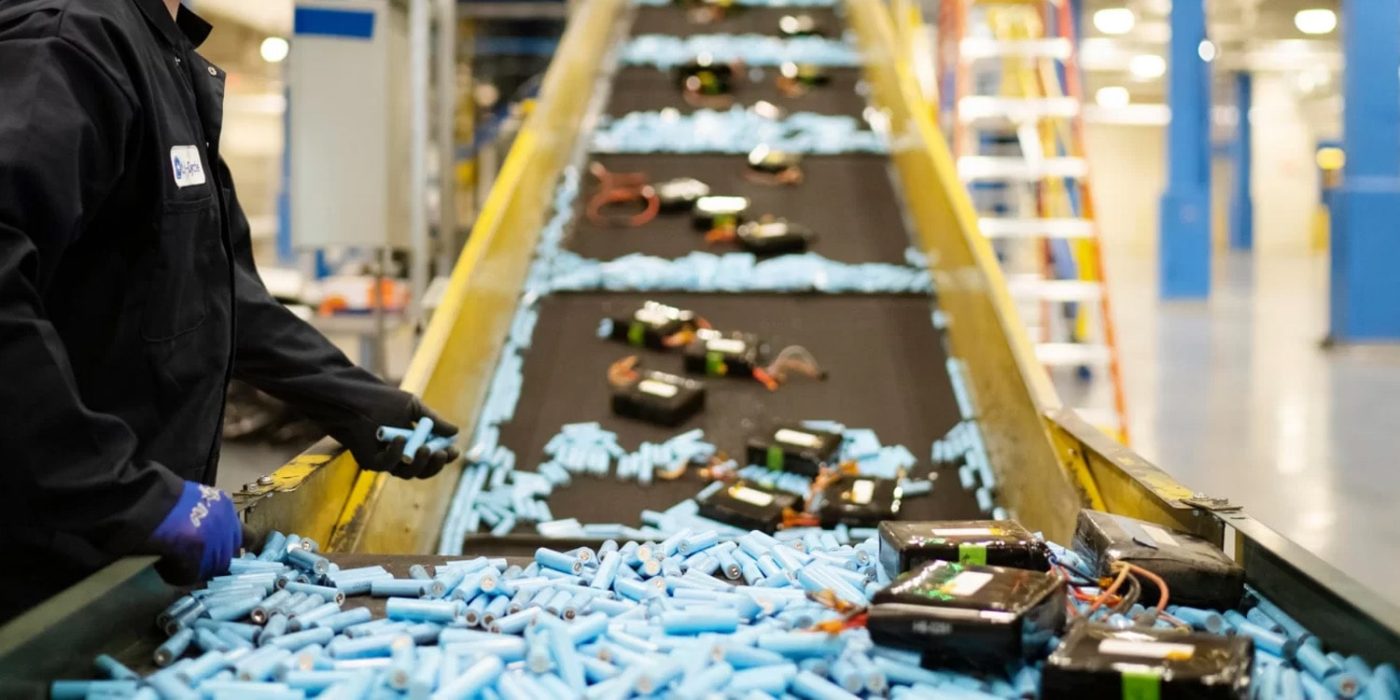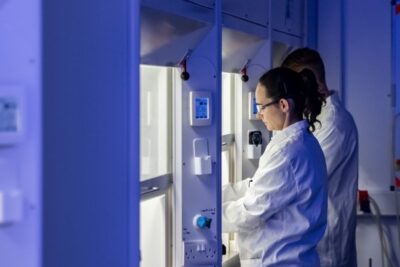EU Parliament votes in favour of law to secure critical raw materials
The EU wants to make greater use of its own resources of critical and strategic raw materials in future. The EU parliamentarians have now adopted a corresponding law by 549 votes to 43 with 24 abstentions. The Council must now formally approve the new regulations. They will then be published in the Official Journal of the EU. The breakthrough for the so-called ‘Critical Raw Materials Act’ was already achieved in mid-November with an informal agreement between the Parliament and the Council.
The only change to the previous draft is the recycling quota, which was increased by Parliament to 45 per cent compared to the previous plan – “taking into account technical and economic feasibility”, as it says. More details in a moment.
A little background beforehand: EU bodies have been working for several months on a law that aims to guarantee the EU’s access to a “secure, diversified, affordable and sustainable supply of critical raw materials”. The document is particularly relevant for the electromobility market with regard to the value and supply chain for electric vehicle batteries. In March 2023, the European Commission presented its proposals for the Critical Raw Materials Act. The Parliament and Council subsequently discussed the proposal. As mentioned, an informal agreement was reached around four weeks ago, meaning that the Critical Raw Materials Act is now nearing its final version.
What is the content? Essentially, the EU wants to impose local quotas for the extraction, processing and recycling of critical raw materials. The benchmark here is the total demand in the European Union. For 2030, the Commission proposed 10 per cent from local extraction, 40 per cent from processing and 15 per cent from recycling. In addition, the EU should not source more than 65 per cent of its annual demand for a strategic raw material from a single third country in 2030. In this way, the committees intend to reduce the very high level of one-sided dependency on China in particular.
Higher recycling quota agreed
Parliament and member states support this regulation – but wanted to tighten up on one point in the course of their informal agreement: They argued for a recycling target of 25 per cent for 2030. In the parliamentary resolution that has now been passed, this figure is now as high as 45 per cent. MEPs therefore see great leverage in the extraction of strategic raw materials from waste products.
The Parliament phrased its decision as such: “Firstly, the Union should increase the use of its own geological resources of strategic raw materials and build up capacity to allow it to extract the materials needed to produce at least 10 % of the Union’s consumption of strategic raw materials. (…) Secondly, in order to build a full value chain and prevent any bottlenecks at intermediate stages, the Union should in addition increase its processing capacity along the value chain and be able to produce at least 40 % of its annual consumption of strategic raw materials. (…) Therefore, Union recycling capacity should be able to produce at least +10% volume of recycling capacity based on the 2020-2022 baseline for each strategic raw material to at least collect, sort and process 45% of each strategic raw material contained in the Union’s waste taking into account technical and economic feasibility. These benchmarks refer to the 2030 time horizon.”
Back in November, the Parliament also emphasised that the aim must also be to fundamentally “curb demand through resource efficiency and technological progress” and to place a stronger focus on research and innovation in relation to substitute materials and production processes that could replace raw materials in strategic technologies. In other words, the “hunger” for critical and strategic raw materials must also be curbed. This objective can be found in Article 1 of the Act (subject matter and objectives).
The document also contains lists of critical and strategic raw materials. Antimony, arsenic, bauxite, barite, beryllium, bismuth, boron, cobalt, coking coal, copper, feldspar, fluorspar, gallium, germanium, hafnium, helium, heavy rare earth metals, light rare earth metals are now considered critical, Lithium, magnesium, manganese, natural graphite, nickel (battery grade), niobium, phosphorite, phosphorus, platinum group metals, scandium, silicon metal, strontium, tantalum, titanium metal, tungsten and vanadium.
The list of strategic commodities is a novelty. It lists raw materials that will be exposed to “potential supply risks in the future”. Many of them coincide with raw materials that are already critical today. The following raw materials are considered strategic: aluminium, bismuth, boron (in metallurgical quality), cobalt, copper, gallium, germanium, lithium (in battery quality), magnesium metal, manganese (in battery quality), natural graphite (in battery quality), nickel (in battery quality), metals of the platinum group, rare earth metals for magnets (Nd, Pr, Tb, Dy, Gd, Sm and Ce), silicon metal, titanium metal and tungsten.
All committees were and are in agreement that there is a great need for action and that the ‘Critical Raw Materials Act’ should make the EU more competitive and sovereign. In its proposal from March, the Commission set out a whole range of measures to implement the aforementioned target values, which apply at various EU levels. One of the key measures – now also adopted by Parliament – is that strategic raw materials projects will in future be regarded as projects of public interest. As a result, strategic mining projects will be able to be approved within 24 months instead of the current ten to 15 years. Projects in the processing and recycling sector should be given the green light within twelve months.
In March, the Commission also proposed the introduction of monitoring of critical raw material supply chains and the coordination of strategic raw material stocks between member states. In addition, large companies are to be obliged to review their strategic raw material supply chains, and the Parliament and member states support these initiatives.
Value creation is already shifting to Europe
“This legislation is an industrial policy blueprint for a secure and sustainable supply of raw materials in Europe. With targeted economic incentives, we are creating project-planning certainty for private investors – through single points of contact for companies, and fast and simple authorisation procedures with clear deadlines for national authorities. This will boost mining, processing and recycling in Europe,” summarised MEP Nicola Beer (Renew).
Critical raw materials are in ever greater demand due to increasing digitalisation, the expansion of renewable energies and the transport transition. The green and industrial transformation is largely dependent on the availability of lithium, cobalt, neodymium and other raw materials.
europarl.europa.eu, europarl.europa.eu (complete text)





0 Comments